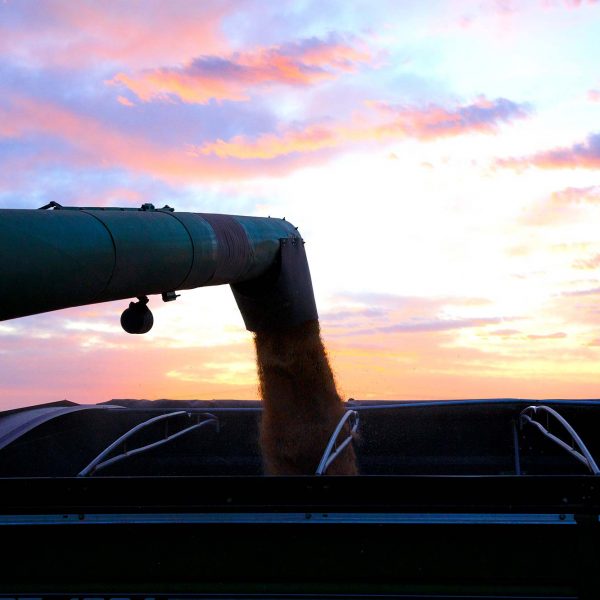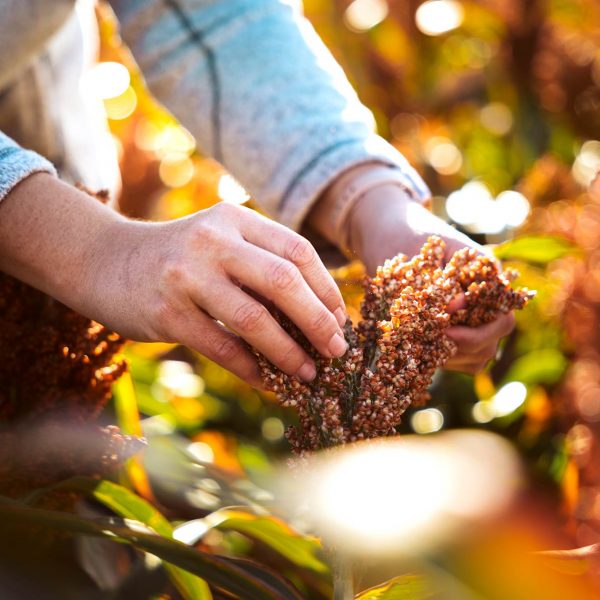Planting Sorghum Following Failed Cotton in 2024
Planting Sorghum Following Failed Cotton in 2024
Brent Bean, Sorghum Checkoff Director of Agronomy
Herbicide Carryover Concerns
Most of the herbicides used for preemergence weed control in cotton have significant label restrictions on when sorghum can be planted. However, experience has shown that in the southern High Plains sorghum can usually be successfully established when planted following a failed cotton crop. The success is largely dependent on the particular herbicide and weather conditions that led to the failed crop. Below are comments on sorghum following specific herbicide applications:
- Do not plant sorghum if Reflex, Flexstar, Staple LX, Pyrimax, Brake FX or Envoke has been used. It should be noted that Corteva’s Inzen sorghum hybrids are tolerant to Staple. However, the hybrids that are available are long maturity and would not be recommended for late planting.
- If trifluralin (Treflan) or pendimethalin (Prowl) was used the sorghum seed must be placed below the herbicide zone. Generally, moving an inch or two of soil away from where the seed is to be planted is sufficient.
- Prometryn (Caporal), Fluometuron (Cotoran), Diuron (Direx). Rainfall will generally have leached these herbicides below where the sorghum seed will be planted. Recent studies have shown that the highest risk is with fluometuron. If fluometuron has been used, it is best to move an inch or two of soil away from where the seed is to be planted.
- If Dual (metolachlor) was used, sorghum can be planted with Concep III treated seed.
- Engenia (dicamba). Labeled plant back restriction to sorghum is 6.4 oz/A = 15 days, 9.6 oz/A – 21 days, 12.8 oz/A – 28 days. In a Lubbock study in 2019, there was no sorghum injury when planted 7 days after the 12.8 oz/A treatment. However, 3.25 inches of rain was received 3 days after the herbicide application.
- Xtendimax (dicamba) 22 oz/A. Labeled plant back restriction is 100 days to sorghum. Although plant back studies to sorghum have not been completed specifically with this product, sorghum should respond similarly to the 12.8 oz/A rate of Engenia above. Again, rainfall after the application is critical is dissipation of the dicamba.
- Tavium (dicamba + metolachlor). Labeled plant back restriction is 6 months to sorghum. However, it should be noted that the labeled rate of Tavium has the same amount of dicamba as the 12.8 oz/A rate of Engenia.
Hybrid Selection
- Typically, a medium maturity hybrid can be planted up to about July 1st while early maturing hybrids can be planted up to about July 12th.
- Check with seed company representatives on the hybrids best suited for your environment and planting date.
- Consider planting a sorghum (sugarcane) aphid tolerant hybrid. These hybrids may still need to be sprayed but research has clearly shown sugarcane aphids multiply slower on these hybrids providing more time for insecticide application and reducing the potential for the necessity to spray.
- Make sure sorghum seed is treated with Cruiser, Poncho or Gaucho. These typically provide 40 days of sorghum aphid control. This early protection is important on late planted sorghum.
Seeding Rate
- Increase seeding rate 25 percent in late planted sorghum compared to optimum planting date to compensate for the reduction in tillering that typically occurs with late planting.
- Dryland – Suggested seeding rate is 24,000 to 32,000 seed/acre.
- Limited Irrigation – Suggested seeding rate is 30,000 to 50,000 seed/acre.
- With the warm soil temperatures associated with late planting expect the sorghum to emerge in 3 to 5 days.
Fertilizer
- For nitrogen needs, consider any N that may have been applied to the cotton. In areas where high rainfall amounts occurred after N was applied, significant leaching of the N out of the potential sorghum root zone may have occurred. In this situation consider applying a starter fertilizer.
- A good rule of thumb is 2 lbs of N are needed for every 100 lbs of expected grain yield. A 3000 lb yield goal will need 60 lbs. of N.
Weed Control
- It is important to start off with a clean field. Glyphosate can be applied any time before planting or prior to emergence without any risk to the sorghum. Adding a burndown product, such as Sharpen or Reviton, can aid in control of resistant or hard to control weeds. See label for details.
- A pre-emergence herbicide is important. Consider applying Dual (s-metolachlor), Outlook (dimethenamid), or Warrant (acetochlor). These are sold under various trade names and are fairly short residual herbicides that will not impact cotton planted the following year. If there is not enough time to apply prior to or immediately after planting these can also be applied early post-emergence (but before weed emergence).
- Care should be taken in applying atrazine late due to potential carryover.
- Always check labels for specifics.
Hay Option
- Typically, a sorghum/sudangrass (haygrazer) is a good option. The advantage of a hay crop is that less water is required compared to producing grain. The best quality and yield will be obtained if harvested in the boot to early heading stage. Check with seed companies for the best option for your farm. Texas AgriLife out of Amarillo conducted several years of hay trials prior to 2012. Data from these trials should be available or copies can be obtained from the United Sorghum Checkoff.
- Another option for hay is to plant millet. The advantage to millet is excellent quality and most varieties are very resistant to sugarcane aphid. Their disadvantage is they will not yield as much as a typical haygrazer.
- Grain sorghum hybrids with sugarcane aphid tolerance may also be planted as a hay crop or simply for cover residue. If grain sorghum hybrids are going to be used for hay, increase seeding rate 3O percent over an optimum rate if the sorghum is to be drilled.




